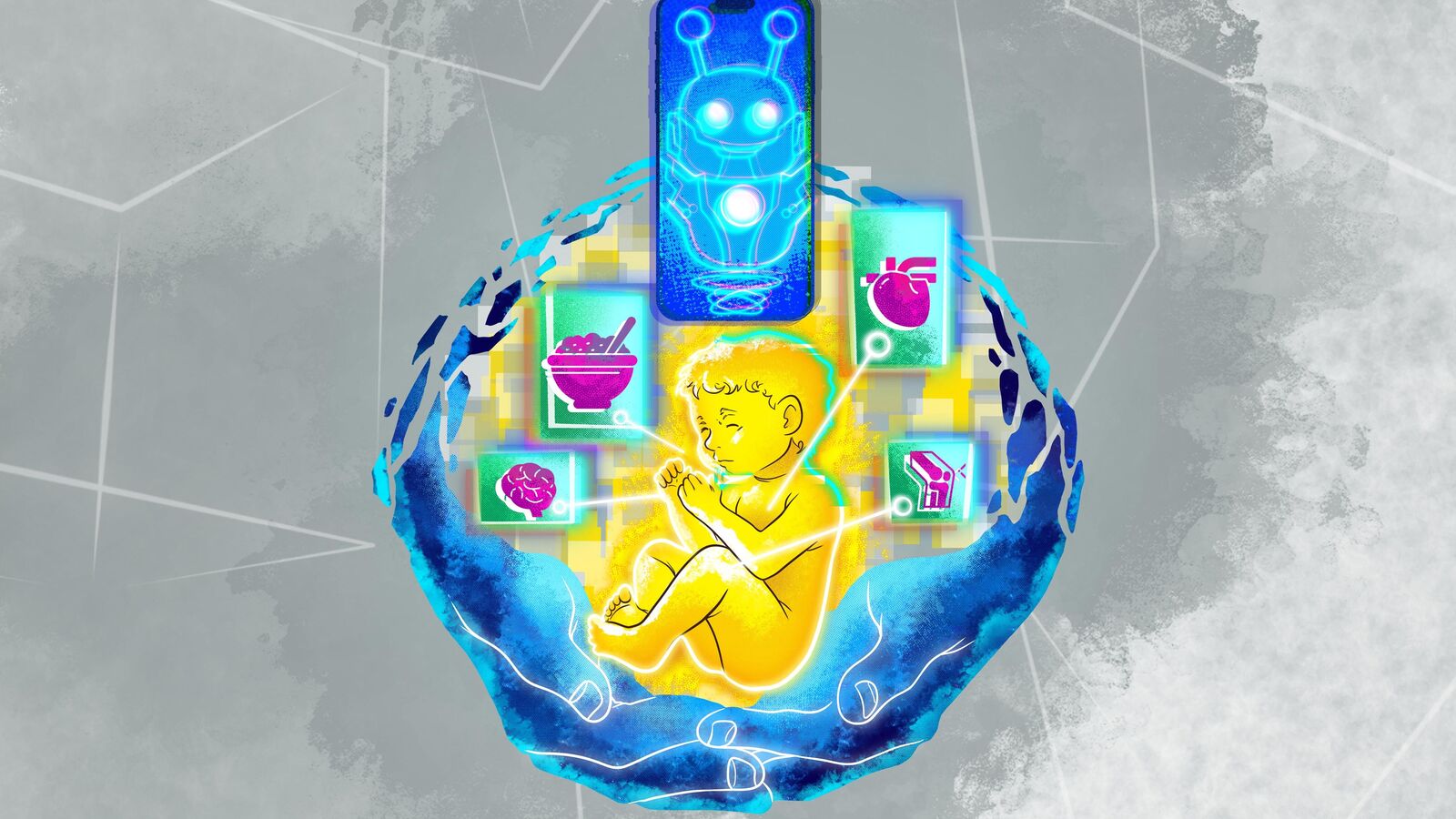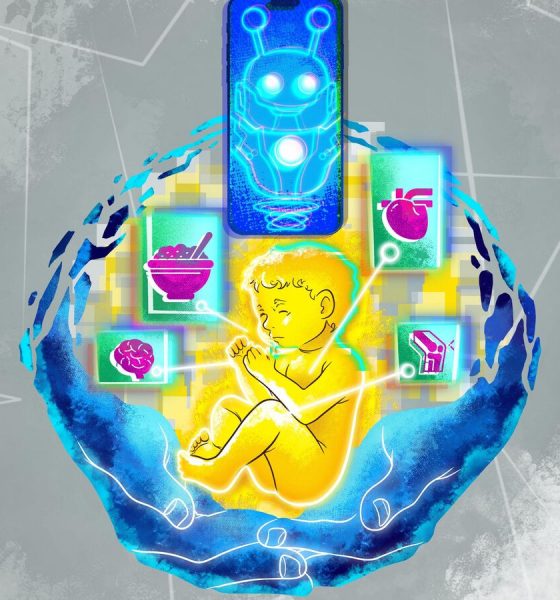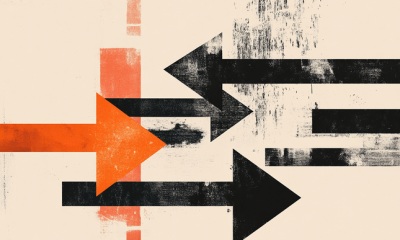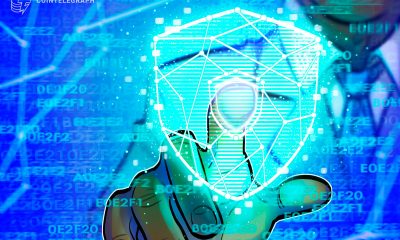

Metaverse
How technology is ensuring India’s infants are in the pink of health – Crypto News
These days, her routine includes something newer and stranger: recording videos of newborn babies.
“Earlier we had to carry weighing scales and tapes, which was difficult. Now, we just carry the phone and it shows us the baby’s weight. Even in small villages, we can do proper measurement easily,” she says.
Patel is referring to Shishu Mapan, an artificial intelligence (AI) tool trained on over 30,000 infants, built by scientists at the Wadhwani Institute for AI, a non-profit that develops AI-based solutions for social impact.
Using a short, arc-shaped video while the newborn is undressed and laid on a cloth sheet, the app estimates the infant’s weight and growth metrics, which eliminates the need for scales or guesswork.
Initially sceptical, workers and mothers gained trust once the app showed accurate readings.
“When we first told mothers we would measure the child using a mobile phone, they thought we were joking. But when they saw the video and the weight appeared on the app, they were happy. Now they lay the sheet down themselves and want to see if their baby has gained weight,” says Patel.
While most babies are weighed at birth, follow-up checks during the critical first six weeks are patchy, especially in rural and underserved areas. In this context, AI-powered tools like Wadhwani AI’s app could become frontline essentials, capable of transforming child health outcomes where the system often falls short. It also eases the burden on frontline health workers, who often struggle to keep up with high demand in rural areas.
Low birth weight, defined as babies weighing less than 2.5kg at birth, is one of the most serious red flags in early childhood health. These infants face a higher risk of stunting, frequent infections and life-threatening malnutrition. Conditions such as marasmus, marked by extreme wasting due to calorie deficiency, or Kwashiorkor, caused by protein deficiency and resulting in swelling, liver damage and immune suppression, are tragically common when detection is delayed. Accurate growth monitoring in the first six weeks is often the only chance to intervene before it’s too late.
“ASHA workers are overworked, their tools are outdated and there’s no digital record-keeping,” says Alpan Raval, chief scientist at Wadhwani institute of AI.
AI-powered solutions offer a way forward, providing accurate and offline-friendly tools that ease the burden on frontline workers and bring consistency to child health assessments.
Shishu Mapan began in 2019, when the Gates Foundation approached the institute with a challenge to develop a solution to accurately weigh low-birth-weight babies in rural India. After years of research and field testing, the pilot finally launched in Daman and Diu last year.
Across India, a new crop of AI-based tools is being deployed to address persistent challenges in tracking early childhood development, particularly in low-resource settings. MAAP (Malnutrition Assessment and Action Plan) by social enterprise RevolutionAIze uses smartphone photos to estimate height and flag malnutrition risks. Researchers at IIIT-Hyderabad are testing a dual-photo method to estimate both height and weight using basic visual cues. The Child Growth Monitor, developed by Welthungerhilfe with Microsoft, uses infrared 3D sensors to scan young children for anthropometric (measurement of the human body) analysis.
Each of these projects is different in scope, age range and technical complexity, but they share a common approach of rethinking child health infrastructure through accessible AI that can be applied on a large scale in densely populated areas.
Digital fix for a systemic gap
Neonatal healthcare in rural India faces challenges of access, affordability and awareness. Wadhwani’s tool tackles this gap through early intervention. Once a baby is discharged from a hospital, the parents only return for immunizations after six weeks, leaving underweight newborns exposed to health risks. To address this blind spot, India’s Home-Based Newborn Care (HBNC) programme requires ASHA workers to conduct home visits during this period. ASHA workers often help identify underweight babies and also connect new mothers with government nutrition programmes. These programmes are essential to prevent low birth weight spiralling into chronic undernutrition. But when weight data is missing or inaccurate, these safety nets often miss the most vulnerable.
The tools available to ASHAs, such as sling-based Salter spring balances, are not suited for this use case.
“The needle flickers and ASHA workers struggle to get a stable reading,” explains Dr. Sneha Nikam, a public health expert at Wadhwani AI. “That makes it hard to detect issues early or take timely action.”
The Shishu Mapan app is a simple solution where an ASHA worker places the baby next to a wooden ruler, records a short video and lets the phone do the rest. The app maps the baby’s key points and calculates weight, length and head circumference. The model, optimized to run on low-end Android phones and tolerate imperfect lighting or motion, works in offline mode without needing the internet or cloud storage, making it effective in rural areas with poor connectivity.

View Full Image
Raval says the initial development of the project began in hospitals where controlled lighting and backgrounds allowed the team to prove that the core idea of estimating weight from video was viable. Field deployment, however, required tweaks. For instance, instead of a checkerboard for visual calibration, Wadhwani used a wooden ruler that ASHA workers already carried.
Some parents raised privacy concerns during tests, which the team eventually handled by storing videos locally and deleting them after processing.
“We tried building a model that could work on blurred faces, but it didn’t work. The AI would overestimate size,” he admits. The team eventually found a compromise where videos are stored locally and deleted immediately after processing. Only internal annotators, bound by NDAs and working in secure rooms, see the raw footage.
In early 2024, the app was piloted in Daman and Diu. Local health authorities integrated it into their PHMP (Proactive health management plan) platform, replacing manual weight entries.
The app’s margin of error, around 114 grams, is significantly lower than spring balances, which can vary by 183 grams. To account for possible over or underestimation, ASHA workers are instructed to refer babies even if their readings are slightly above or below thresholds.
“If the AI says 1.9 kg, we still refer it to local hospitals, because it could actually be a 1.8 kg baby,” says Nikam. Although it is too early to assess the long-term impact on health outcomes, initial feedback suggests a shift in how early growth monitoring is being approached.
According to Nikam, having digital logs adds to the accountability of ASHA workers and also provides a clearer picture. The rise in timely referrals is helping trigger earlier interventions in areas such as nutrition and sanitation.
Expanding AI tools’ ecosystem
While Wadhwani’s tool focuses on the newborn stage, MAAP picks up where it leaves off—monitoring children from six months onward.
Developed by social entrepreneur Romita Ghosh and data scientist Nilashis Roy under their social enterprise RevolutionAIze, MAAP uses a single smartphone photo to estimate height, assess nutritional status and suggest tailored meal plans.

View Full Image
“Over 3.5 million severely malnourished children in India go unscreened,” says Ghosh. “MAAP helps health workers catch early signs even in the remotest corners.”
Built for similar working conditions in rural India, MAAP’s tool also works offline and is prop-free. The team experimented with rulers, checkerboards and even Bisleri bottles for calibration before teaching the AI to estimate scale from posture and surroundings.
Early challenges like poor lighting and photo angles led to a field-tested MAAP Manual and vernacular training videos. Ghosh says co-designing with ASHA and Anganwadi workers was essential. “We didn’t just build it for them. We built it with them,” she says.
MAAP is free for government staff, while private providers pay. This cross-subsidy helps keep the product sustainable.
The data collected through the tool is anonymized and doesn’t store any faces. The algorithm, on the other hand, is constantly updated to reflect regional diversity in body proportions and skin tones. Ghosh says the model has earned global attention with invitations to present at the WHO and the AI for Good Global Summit in Geneva.
In Telangana, IIIT-Hyderabad researchers are testing a dual-photo app that estimates height and weight using markers such as wall charts and scale displays. Still in the pilot phase, it shows potential for institutional settings but requires tighter protocols. Meanwhile, the Child Growth Monitor developed by Welthungerhilfe and Microsoft uses 3D infrared cameras to create full-body scans of children under five. The model is accurate and hardware-driven, but its high cost and dependency on sensors limit its field adaptability.
The road ahead
Wadhwani AI’s next step is to expand its anthropometry model to cover children up to six years old. Prasaanth Balraj, product manager at the institute, who also oversees its work on tuberculosis and maternal health, told Mint that the ministry of women and child development has requested this expansion to integrate the tool with the Poshan Tracker, India’s national child nutrition data platform.
“This will require retraining the model to accurately assess older children, whose movement patterns and body proportions differ significantly from newborns,” says Balraj.
Wadhwani AI is also preparing to roll out pilots in other states, with Arunachal Pradesh among the first. The team has begun the process of contextualizing the model for regional variations in lighting, skin tone and infant appearance. Field teams are supporting this with training, technical setup and feedback loops.
“In many testing sites, this is the first time we’re seeing such data on infant growth being captured and shared upward in near real time,” says Balraj.
For Romita Ghosh, whose work through MAAP focuses on the broader challenge of identifying malnourished children, the long-term impact depends on integrating AI into existing public systems rather than creating parallel ones.
“You don’t move mountains with tech alone. You do it with policy, partnerships and patience,” she says.
MAAP flags early malnutrition risks and suggests meal plans tailored to local diets. By embedding the tool into existing government workflows and offering it free to public health workers while subsidizing costs through private partners, Ghosh says they’re aiming to “move the needle” on India’s malnutrition crisis.
Whether it’s MAAP’s pose-estimation model, IIIT-Hyderabad’s dual-photo tool or Wadhwani’s newborn weight app, the tools will have a larger impact when they integrate into the system. Hence they are being designed to work offline, on basic phones and inside routines that frontline workers already follow.
Scaling AI for healthcare
Sumedha Sircar, a public health researcher with a public health degree from Harvard and founder of Liger India, has worked extensively on deploying AI for cervical cancer screening in rural Bihar and Jharkhand.
“Anthropometry is simpler. It should be possible to build reliable AI around it, especially one that gives standardized, repeatable results in rural settings,” she says.
Beyond accuracy, Sircar emphasizes the potential for AI to improve data reliability.
“ASHA workers are overburdened and often have to meet targets. A smartphone tool that requires visual inputs makes data harder to fudge than paper entries,” she says.
A smartphone tool that requires visual inputs makes data harder to fudge than paper entries.
— Sumedha Sircar
Sircar suggests expanding the ASHA workforce and using AI to embed local training and feedback loops, so workers can report issues or share successes without waiting for top-down interventions.
Shally Awasthi, head of the paediatrics department at King George’s Medical university and a member of the World Health Organization’s advisory group, says AI-based interventions have huge potential in detection of malnutrition and undernutrition in areas with limited access to trained paediatricians. They also have a role to play in areas manned by healthcare professionals who are either too busy to focus on anthropometry and its interpretation and follow up, or have not been trained in paediatrics, she says.
“AI intervention for detection must be supported by facilities for action and follow-up at a clinic close to their home,” says Awasthi. “The follow ups cannot be done effectively by AI as a lot of personal coaching and handholding will be needed for a long time.”
In other words, AI is not a silver bullet. But it can have a hugely positive impact on millions of lives if it is complemented by changes in practice and policy.
Key Takeaways
- Low birth weight is one of the most serious red flags in early childhood.
- These infants face a higher risk of stunting, infections and malnutrition.
- While most babies are weighed at birth, follow-up checks during the critical first six weeks are patchy, especially in rural and underserved areas.
- A new crop of tools wants to rethink child health infrastructure through accessible artificial intelligence.
- The AI-powered tools could become frontline essentials.
- It could also ease the burden on health workers who often struggle to keep up with high demand.
-

 Technology1 week ago
Technology1 week agoVijay Sales Apple Days: iPhone Air and iPhone 17 see steep price cuts, iPhone 15 goes below ₹50,000 – Crypto News
-

 Technology1 week ago
Technology1 week agoVijay Sales Apple Days: iPhone Air and iPhone 17 see steep price cuts, iPhone 15 goes below ₹50,000 – Crypto News
-

 others1 week ago
others1 week ago228,876 Americans Warned After Hackers Hit Financial Firm – Names, Social Security Numbers and More Potentially Exposed – Crypto News
-

 Technology1 week ago
Technology1 week agoAI unicorn Fractal said to begin book-building for ₹4,900 cr IPO next week – Crypto News
-

 Technology1 week ago
Technology1 week agoBest phones under ₹25,000 you can buy before the New Year: OnePlus Nord CE 5, Realme P3 Ultra and more – Crypto News
-

 Technology6 days ago
Technology6 days agoiPhone 17 Pro Max gets over ₹11,000 discount ahead of New Year: how to grab the deal – Crypto News
-

 Technology5 days ago
Technology5 days agoNew Year 2026 cinematic portraits made easy: 5 Top AI prompts for ChatGPT, Gemini, and Grok – Crypto News
-
Business4 days ago
Coinbase CEO Outlines 2026 Vision: All-in-One Exchange in Priority – Crypto News
-

 others1 week ago
others1 week agoThree resistance levels stand between bulls and breakout – Crypto News
-
others5 days ago
Dogeball’s Live Testnet Gains Traction Ahead of Its Presale Launch – Crypto News
-

 Blockchain1 week ago
Blockchain1 week agoRezolve Debuts Revenue Pools to Support Blockchain – Crypto News
-
Business4 days ago
Coinbase CEO Outlines 2026 Vision: All-in-One Exchange in Priority – Crypto News
-

 Cryptocurrency1 week ago
Cryptocurrency1 week agoGold and silver won 2025 – Crypto News
-

 Metaverse1 week ago
Metaverse1 week agoLaw firms prep for a deeper AI integration in 2026 as it enters workflows – Crypto News
-

 Metaverse1 week ago
Metaverse1 week agoLaw firms prep for a deeper AI integration in 2026 as it enters workflows – Crypto News
-

 others3 days ago
others3 days agoApple CEO Pours $2,940,000 Into Stock That Billionaire Paul Tudor Jones Has Placed Massive Bullish Bet On – Crypto News
-

 Cryptocurrency1 week ago
Cryptocurrency1 week agoGold and silver won 2025 – Crypto News
-

 Technology1 week ago
Technology1 week agoGoogle Photos set to arrive on Samsung AI TVs with new smart viewing features: All you need to know – Crypto News
-

 others6 days ago
others6 days agoUSD/INR opens flat near 90.20 on last trading day of 2025 – Crypto News
-

 others6 days ago
others6 days agoBig Rotation Into Bitcoin Incoming As BTC-Gold Ratio Flashes Bullish Reversal Signal: Michaël van de Poppe – Crypto News
-
Technology6 days ago
Bitcoin Price Prediction Ahead of FOMC Minutes – Crypto News
-

 Cryptocurrency5 days ago
Cryptocurrency5 days agoBitwise Files for 11 Altcoin ETFs Targeting AAVE, UNI, SUI, More – Crypto News
-

 Cryptocurrency5 days ago
Cryptocurrency5 days agoFrom Bybit to Coinbase: 2025’s Biggest Crypto Hacks and Breaches – Crypto News
-
Technology5 days ago
Bitcoin Treasury News: Tether Boosts Holdings by 8,888 BTC Despite Market Volatility – Crypto News
-

 Cryptocurrency3 days ago
Cryptocurrency3 days agoBitcoin Dominance Logs Rapid Plunge as XRP, SHIB, and Other Altcoins Surge – Crypto News
-
Technology1 week ago
Brian Armstrong Praises Indian Police for Arresting Ex-Agent in $400M Coinbase Hack – Crypto News
-
others1 week ago
Trump Declares Tariffs Creating “Great Wealth” as Fed Rate Cut Odds Collapse to 14% – Crypto News
-
Business1 week ago
Top 3 Important Crypto Events to Watch in January 2026 – Crypto News
-
Business1 week ago
Is $1 Dogecoin Price Technically Possible in 2026? – Crypto News
-
others1 week ago
United States Initial Jobless Claims came in at 214K, below expectations (223K) in December 19 – Crypto News
-

 Metaverse1 week ago
Metaverse1 week agoWhy Bernie Sanders is targeting ‘richest people in the world’ over AI boom? – Crypto News
-

 Blockchain1 week ago
Blockchain1 week agoGalaxy Digital Explains The Setup – Crypto News
-

 Technology1 week ago
Technology1 week agoBharat Taxi to launch nationwide on January 1, 2026: here’s everything you need to know – Crypto News
-

 Cryptocurrency1 week ago
Cryptocurrency1 week agoBitcoin Price Below $90K: A Healthy Correction or Brewing Trouble? – Crypto News
-

 Blockchain7 days ago
Blockchain7 days agoGold and Bonds Take the Lead – Crypto News
-

 Blockchain6 days ago
Blockchain6 days agoPrivacy Coins Outperform as Crypto Investors Turn Defensive – Crypto News
-

 Blockchain6 days ago
Blockchain6 days agoCould A Bitcoin Drop To $74,000 Spell Bankruptcy For Strategy? Top Analysts Respond – Crypto News
-

 others6 days ago
others6 days agoRobinhood CIO Reveals Firm’s 2026 Stock Market Outlook – Here’s the S&P 500 Price Target – Crypto News
-

 Cryptocurrency6 days ago
Cryptocurrency6 days agoWhat to Expect After the Latest Fed Rate Cut – Crypto News
-
others6 days ago
Why Are Crypto Prices Surging on the Last Day of 2025? – Crypto News
-
Cryptocurrency6 days ago
Bitcoin Price Prediction Ahead of FOMC Minutes – Crypto News
-

 Cryptocurrency6 days ago
Cryptocurrency6 days agoDavid Beckham–backed Prenetics abandons Bitcoin strategy to focus on core health business – Crypto News
-

 others6 days ago
others6 days agoFive Tech Stocks Set To Boom in 2026, According to Wedbush’s Dan Ives – Crypto News
-

 Blockchain6 days ago
Blockchain6 days agoBitcoin Enters Decision Phase, But What Does It Mean For The Crypto Market? – Crypto News
-

 others5 days ago
others5 days agoBreaking down the trendline shift and resistance ahead – Crypto News
-
others4 days ago
Bitcoin Could Rally to $170,000 in 2026 If This Happens: CryptoQuant – Crypto News
-
Business4 days ago
Coinbase CEO Outlines 2026 Vision: All-in-One Exchange in Priority – Crypto News
-

 Cryptocurrency4 days ago
Cryptocurrency4 days agoCanton’s $6T RWA rails and Lighter’s Hyperliquid multiple – Crypto News
-
Business2 days ago
Top Gainers of the Week: MYX, PEPE, CC Lead Market Gains as as Bitcoin Rallies To $90k – Crypto News
-

 Cryptocurrency1 week ago
Cryptocurrency1 week agoGold and silver won 2025 – Crypto News










